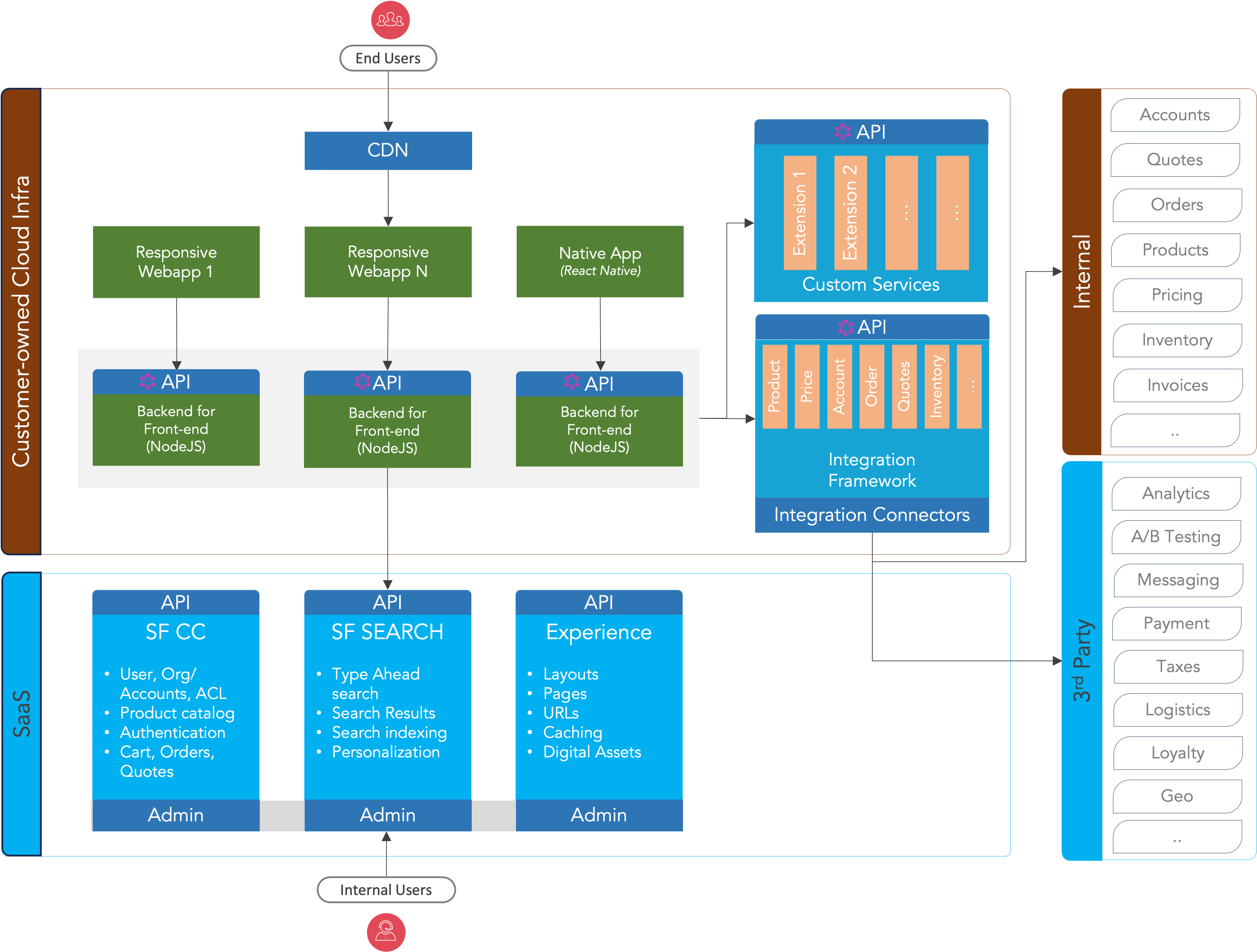We can help you migrate to Salesforce Commerce Cloud

DOZENS
Certifications
Salesforce certifications across all layers of the platform: Architecture, Data, Development, Integrations, Administrator, Deployment, Identity, and more
HUNDREDS
Consultants/Developers
Cross-border development with centers in North America, Asia, and LATAM
Migrating to SFCC from Oracle Commerce

Previously the industry's top digital commerce platform for large enterprises, customers of the Oracle Commerce platform today find themselves compelled to migrate to another platform due to multiple reasons. The technology leader (CIO/CTO) is concerned with the outdated technologies stack and monolithic architecture. The digital business leaders and owners are offered very few, if any, innovative product features and roadmap in recent years. These issues, along with other traits of a sunsetting platform, significantly impact the value of the investment, especially when considering the substantial recurring maintenance and licensing costs--a significant challenge for Finance and Operations annually.
However, the process of migrating from the Oracle Commerce Platform can pose significant challenges and risks for many of our clients. It demands careful consideration of the numerous customizations that have been implemented over the years, a profound understanding of the requirements and objectives set by both the business and technology units within the organization, and the appropriate utilization of the capabilities offered by the new platform.
Oracle Commerce
Platform (OCP)
Knowledge
- Personalization
- User experience and layout management
- Site content merchandising
- Search and guided navigation
- Product information management
- User and organization management
- Content & digital asset Management
- Multi-site, multi-organization Management
- Pricing, promotion, and discounts
- Reusable components
- Custom components and services
- Event-driven workflows
- Order management and fulfillment
- Self-service capabilities
- Integrations with 3rd party systems
Understanding of
the Business and
Technical Needs
- Unique requirements along key business workflows: order & quote capture, purchase approvals, pricing, inventory, and customer data.
- Complete attribution of core data entities
- Configurable products, personalize-able products, and other rule-based constraints.
- Personalized content strategy
- Sites management
Technology Requirements & Goals
- Core development frameworks
- Loosely coupled, service-oriented architecture
- Extensibility of platform core behavior and data entities
- On-demand scalability
- Cloud-native technologies and tools
Utilizing the Salesforce
Commerce Cloud (SFCC)
Platform
- Personalized customer experiences, easy build customized digital storefronts, and mobile apps with Einstein Recommendations
- Mobile-friendly with a rich mobile experience
- A key component of Customer 360, seamlessly integrates with Salesforce CRM and Marketing Cloud
- Enhanced scalability and reliability on salesforce multi-tenant cloud platform, lower maintenance costs
- Omni-Channel functionalities merge eCommerce, order management, and offline store operations in one SaaS solution, run business across multiple channels from a single platform
- Predictive Intelligence – Salesforce Einstein AI Discovery and Prediction builder
- Partner Ecosystem and AppExchange with additional features and services
MIGRATION STRATEGIES
There are numerous factors to consider when determining the most suitable migration approach for your situation. These factors include the overall migration timeline, internal budget, important business events, and organizational milestones that are closely connected. However, the two strategies most commonly observed are the "Big Bang" approach and the incremental decomposition of the monolithic Oracle Commerce platform.
BIG BANG
When the effort to sort out the intricate customizations of the Oracle Commerce platform is too large, and there’s a stronger willingness to embrace the paradigm of the new than replicating the old, then this approach may be the most efficient form of migration.
- Understand the out-of-the-box features and capabilities of the new platform
- Identify the essential business requirements and must-have customizations, keeping in mind the new does not equal the old…and it’s OK.
- Implement the new platform and the necessary customizations
- Define precisely all data mappings for the core and essential attributes
- Soft-launch new systems to specific customers or full cutover if the risk is managed
Pros
- Simplicity of transition in organizational alignment and change management
- Potential time and cost savings
- Less risk to data integrity as entire datasets are migrated at once
- Reduced complexity in system designs and migration execution
Cons
- High risk with significant impact to customers and organization
- Steeper learning curve for business and technical users
- Limited fallback option and/or costly rollback procedures

DECOMPOSITION
When the migration timeline is flexible and the current system is sufficiently abstracted and modularly designed, migrating incrementally may be the best risk-mitigated strategy to validate the target end points/platform, one by one. It aligns perfectly for those who envision a composable digital commerce system for their organization.
Typical Decomposition Method
- Segregate the monolith into modular areas, e.g., experience management, search, content, core commerce, and so forth
- Refactor the existing Oracle Commerce applications so that each module-specific features are accessed via service invocation
- A/B test or completely switch out the invoked module with the corresponding services from the new platform
- Repeat until only the core commerce is left, along with complete data migration
Pros
- Reduced risk by small change scope
- Incremental and continuous value delivery to the organization
- Better adaptability to change next incremental phase based on user feedback
- Continuous improvement cycles that are aligned with organizations who embrace Agile development methodologies
Cons
- Prolonged migration timeline
- Increased complexity and dependencies between modules and phases
- Potentially higher total cost due to timeline and complexity
MIGRATION EXAMPLE
An example of an end-state architecture of a composable, headless digital commerce system with SFCC as the core services for commerce, search, and user experience.

Let Us Know How We Can
Help With Your
Oracle Commerce
Migration
Learn more about our Oracle Commerce migration playbook that will de-risk your migration to Salesforce Commerce Cloud.
